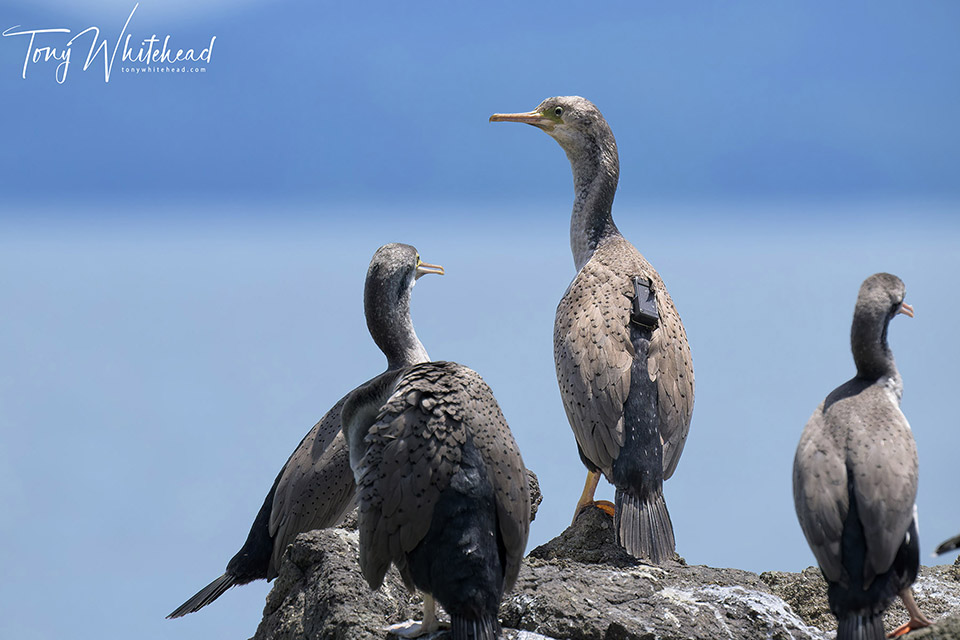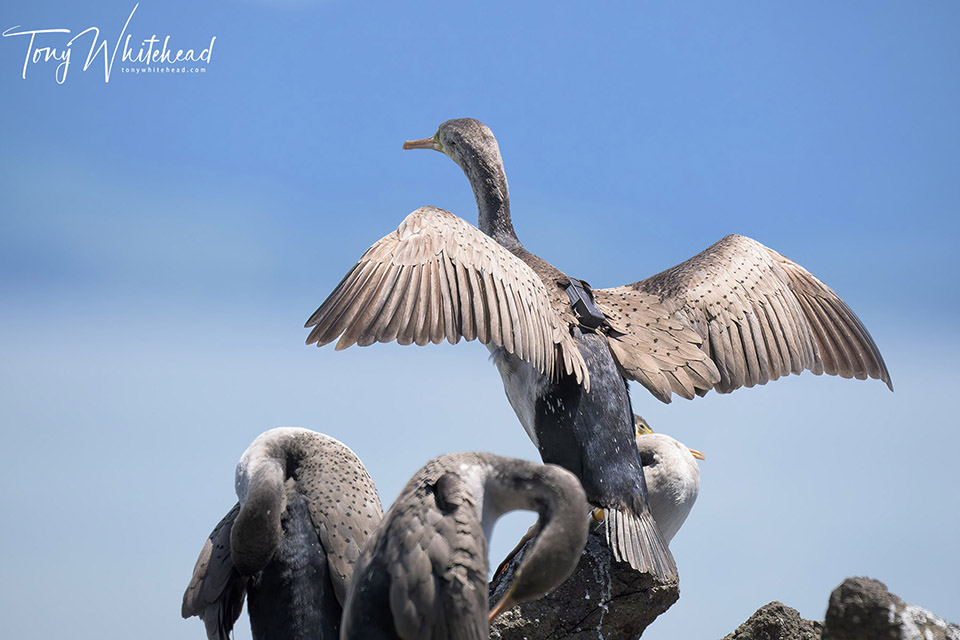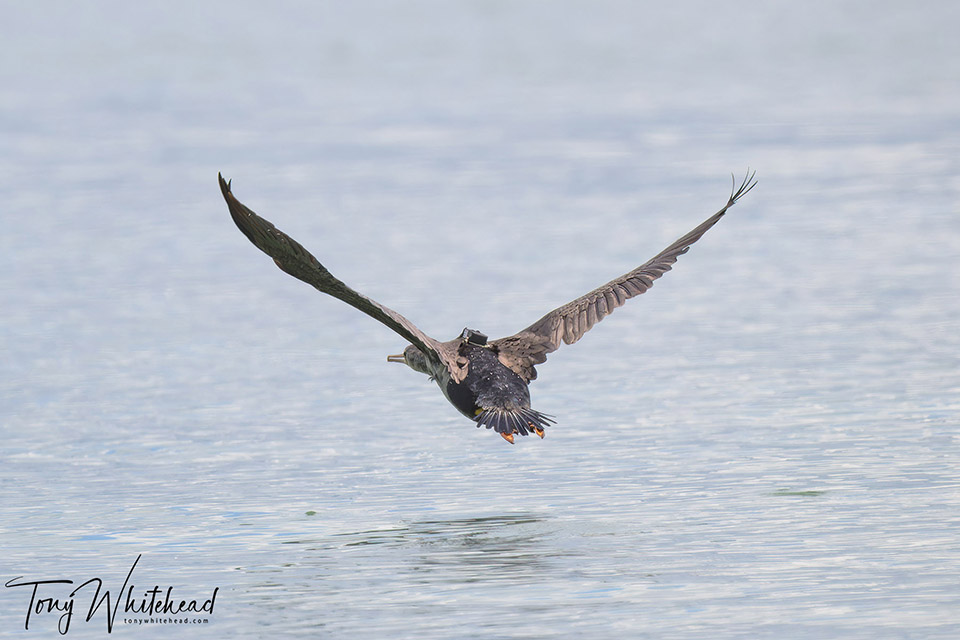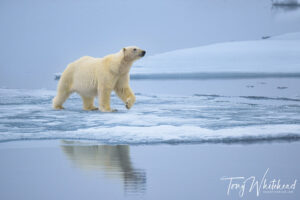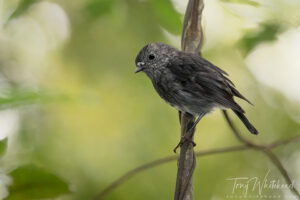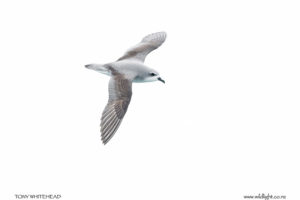Spotted Shags/Kawau tikitiki are largely a South Island species but there is a small population in the Hauraki Gulf and it is always exciting to see them. They are genetically unique from their South Island relatives and highly endangered. Some really fascinating GPS tracking data is emerging from GPS tracking studies being coordinated by Matt Rayner from the Auckland War Memorial Museum that Chris Gaskin and Edin has been involved with.
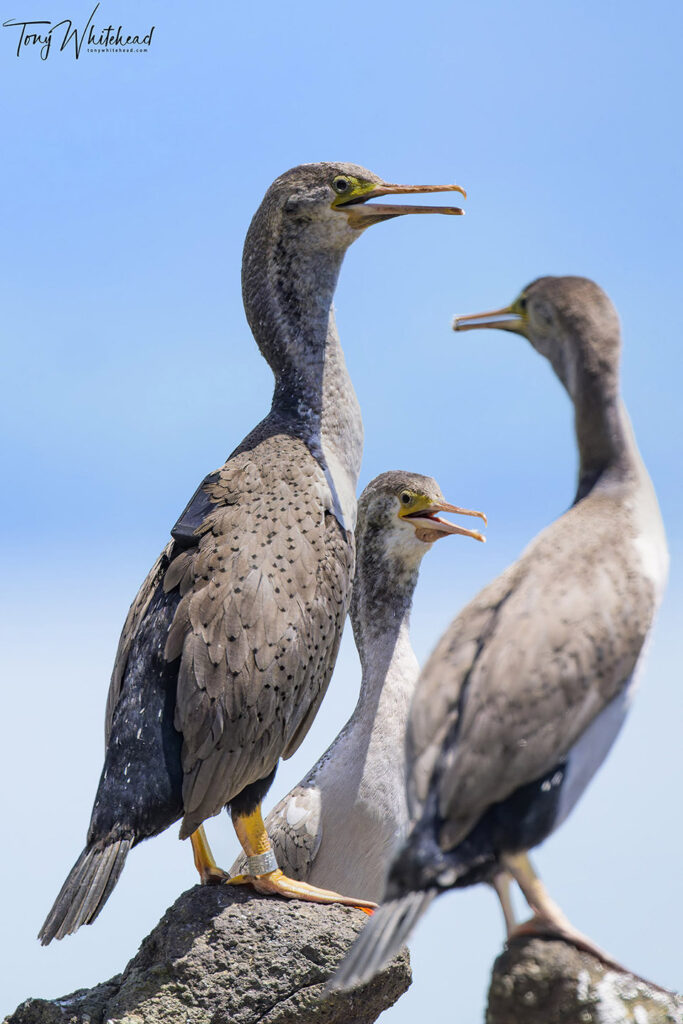
This work involves capturing the birds at sea and fitting them with small solar powered GPS backpacks that enable tracking and behavioural data to be collected and analysed. This article from NZ Geographic, The life and times of Shag 224796, gives a fascinating, although depressing, account of the insight this work can give us into the details of the life and death of an individual bird and the threats they face.
While stopping over at Pūkororkoro/Miranda on our way north in November we made a trip to Thames in the hope of seeing and photographing the birds where they rest at that time of year. We were lucky that the tides were right for a good group of birds and I hoped I might locate one of the GPS tagged birds amongst them. I saw one which looked as though it may be sporting a harness but it took a lot of patience in the hot sun before it turned to show a GPS nestled between it’s wings. Fortunately I was able to get good detailed images including the band number to share back with Matt and Edin.
This is one of those examples where none of these images are photographically exciting – horrible light and nothing unique in terms of behaviour – but are exciting documentary images that have some scientific value. For a banded bird a GPS tagged image would be a useful data point but for a GPS tracked bird the GPS location from the bird’s tag is more accurate than a tagged image of the camera location. The image though can provide some information regarding the apparent health of the bird so can be a useful adjunct. Personally it was just exciting to find a bird that Matt, Chris and Edin had captured, banded and fitted with a GPS tracker.
Photos with Nikon Z9 and Nikkor Z 800mm f6.3 VR S +1.4x teleconverter
